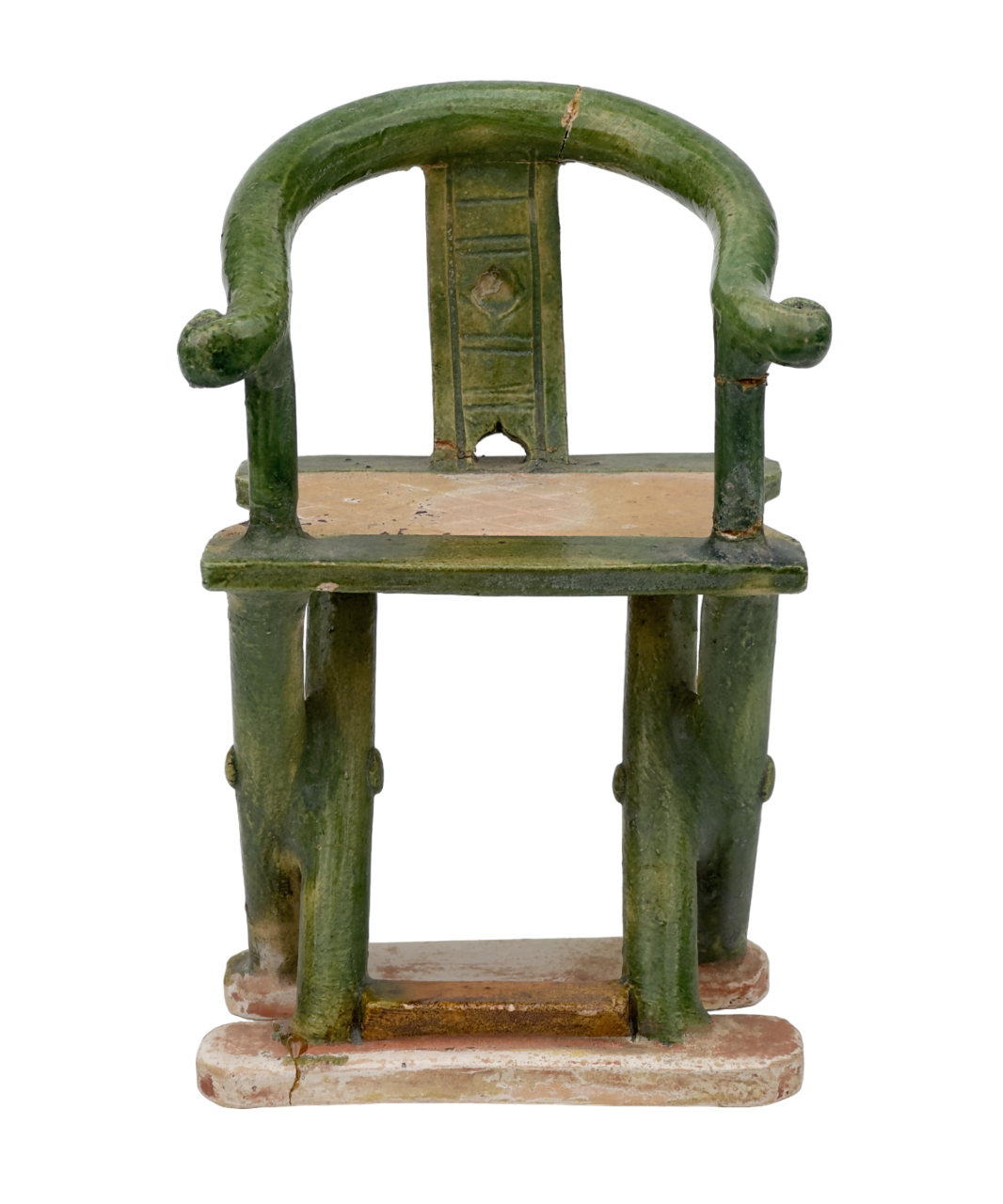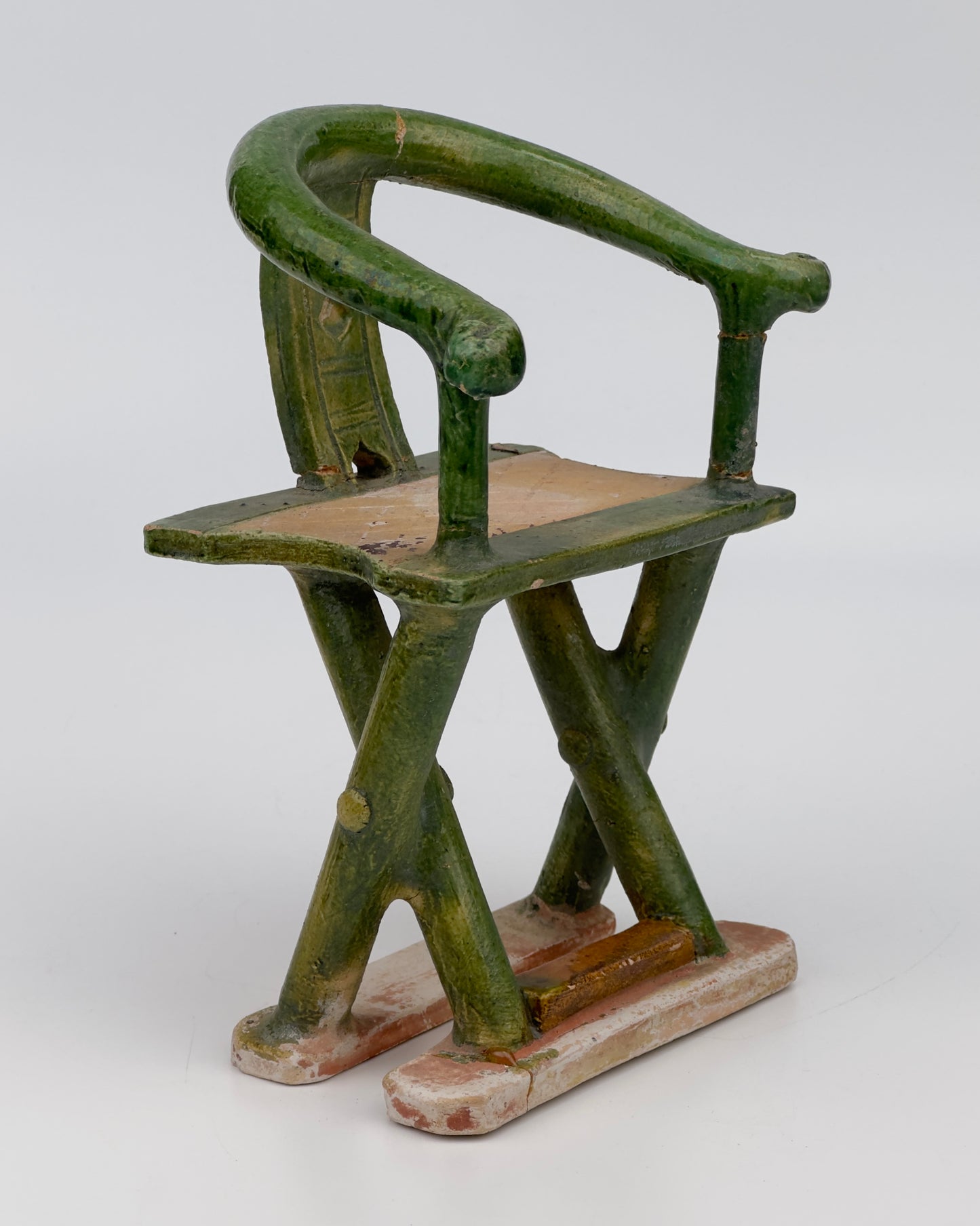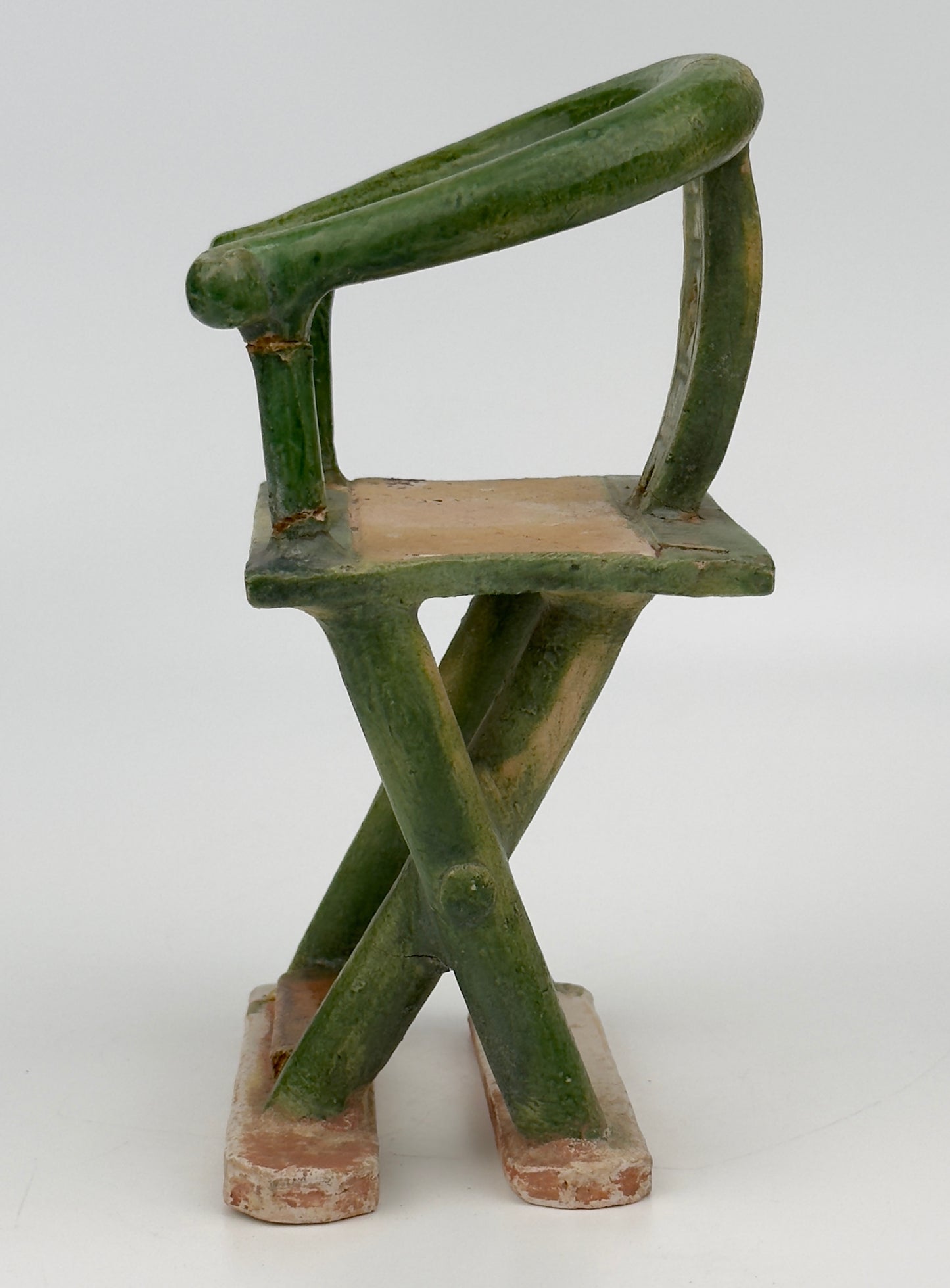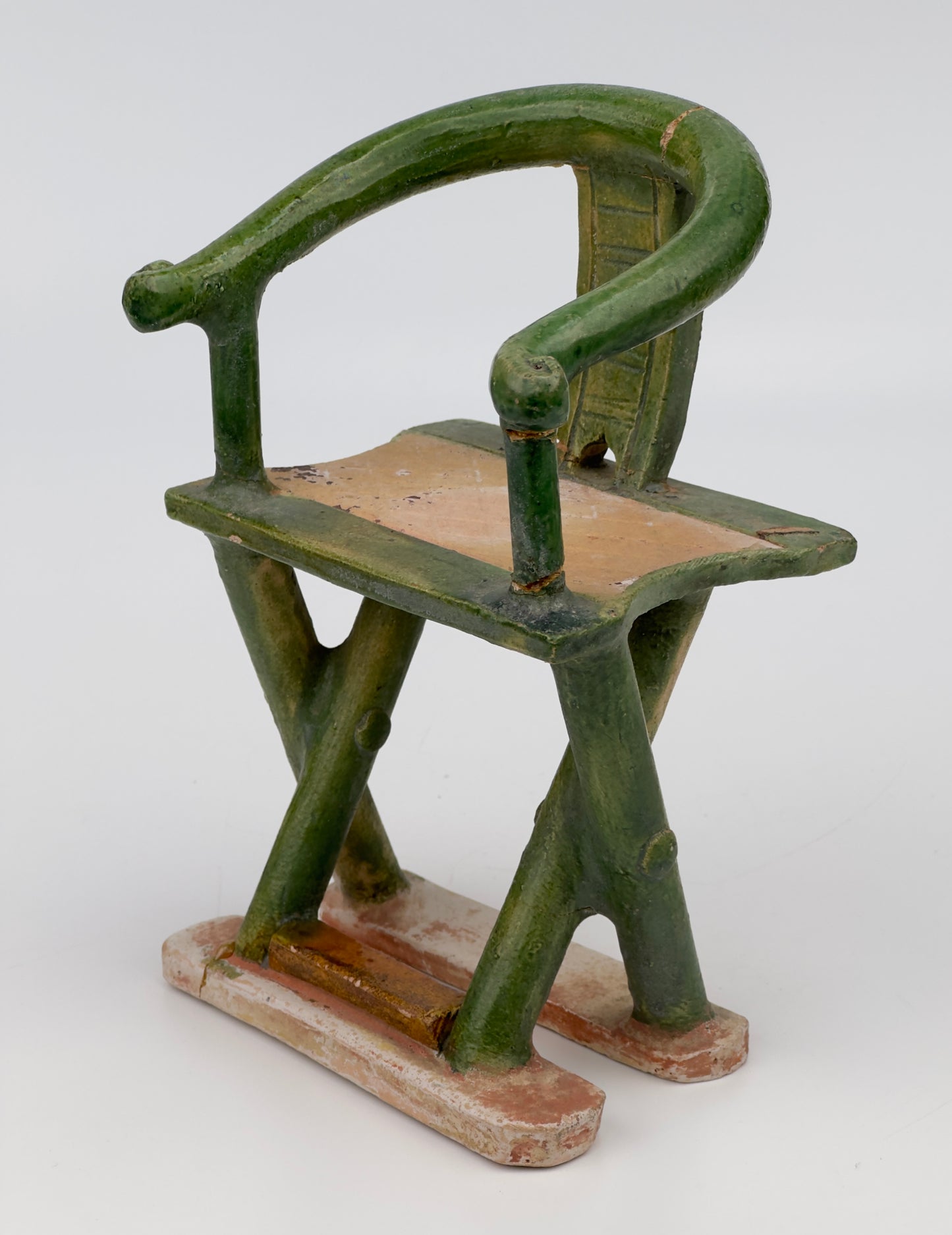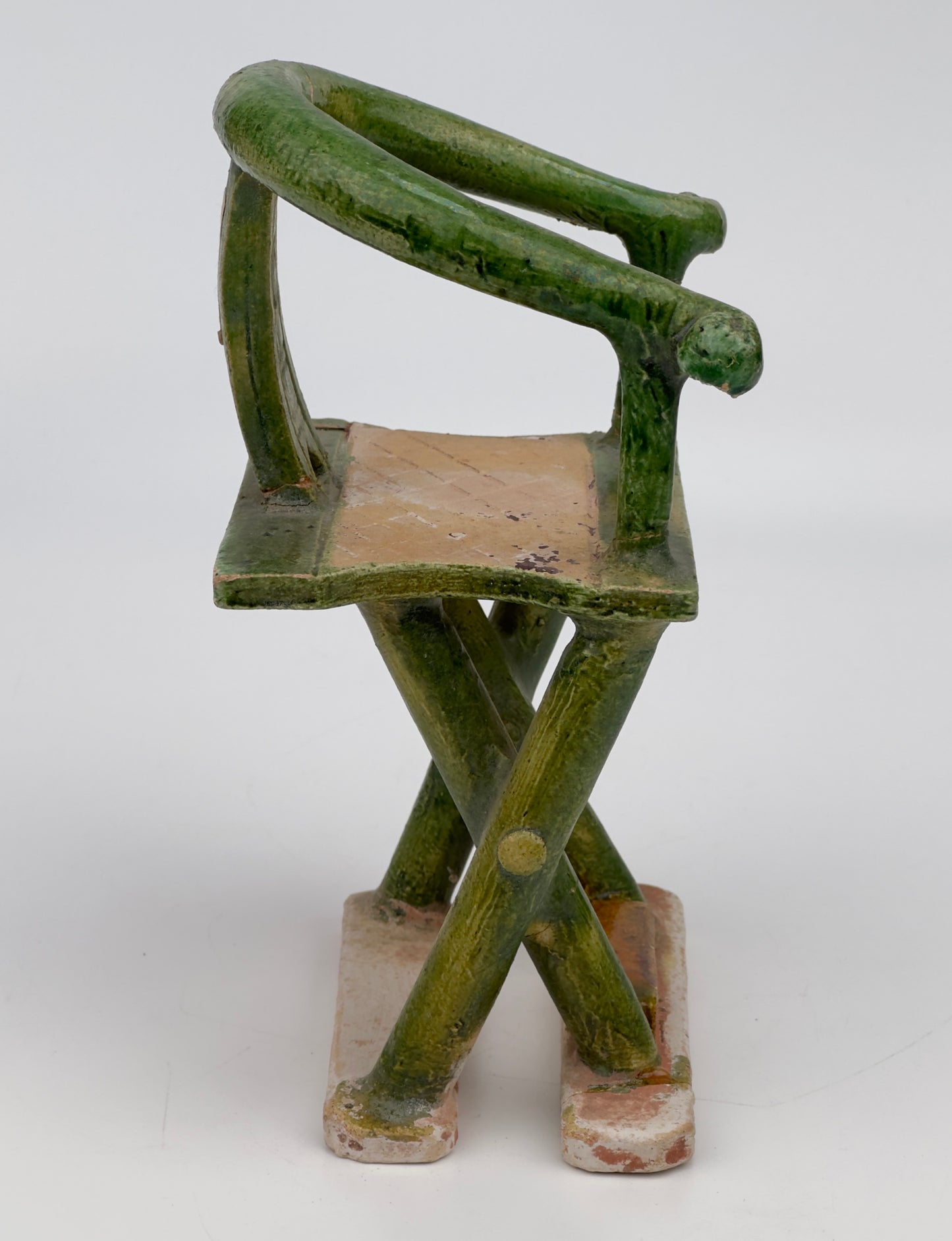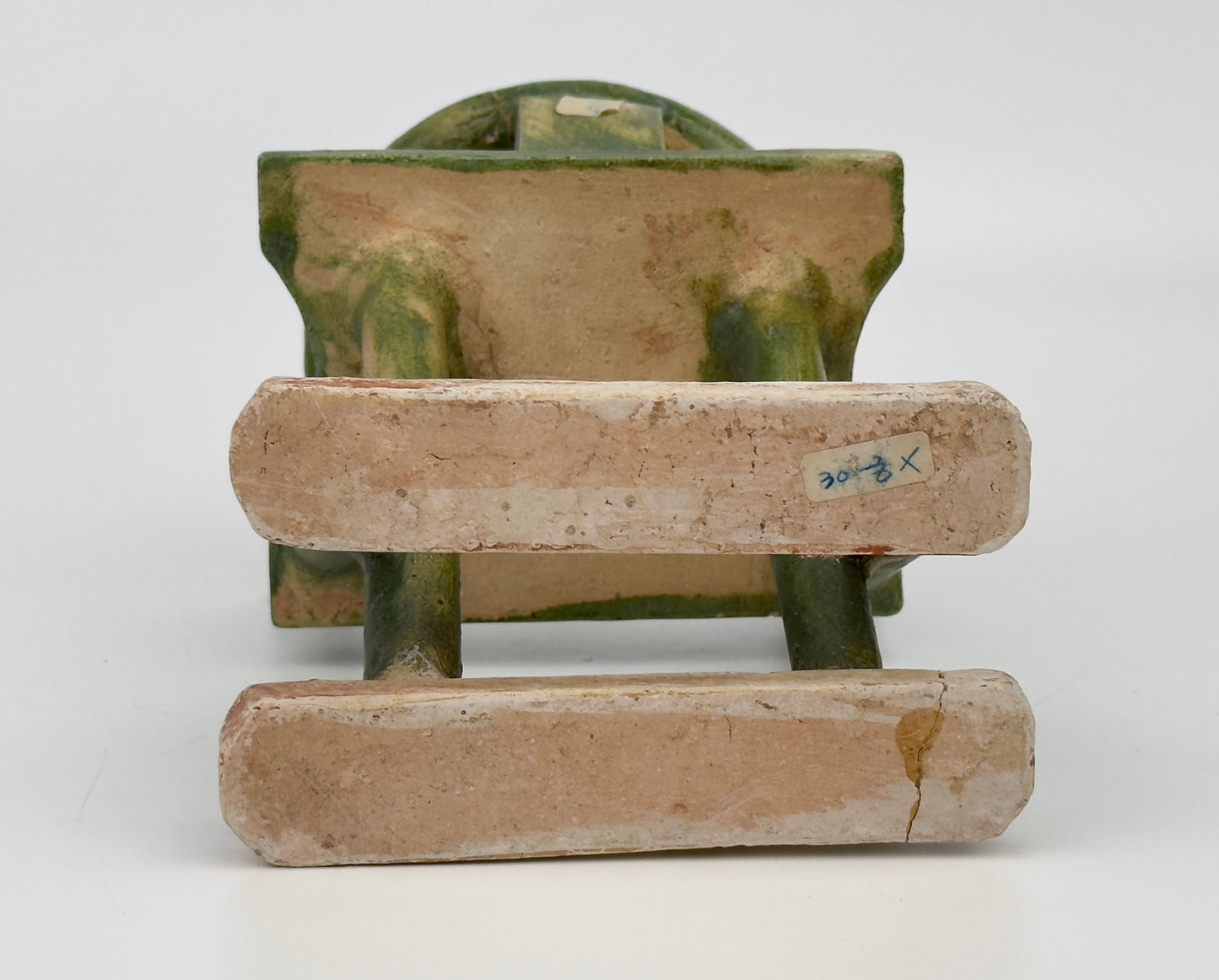Pottery Model of a Folding Chair, 16th century, Ming dynasty
Pottery Model of a Folding Chair, 16th century, Ming dynasty
Couldn't load pickup availability
This piece is an example of Mingqi, items specifically crafted for burial to accompany the deceased into the afterlife. The terracotta army is the most renowned example of such burial objects. Mingqi items represented people, houses, farms, granaries, livestock, and anything significant from this world to provide comfort and status in the next life. Unlike the life-sized and vast terracotta army, which reflected the importance of the first emperor of China, most Mingqi objects were small models, much smaller than the actual items or individuals they represented.
Period: Ming Dynasty (1368~1644)
Medium: Sancai-Glazed
Type: Mingqi
Size : 12.5cm(Diameter), 20cm(Height)
Condition : Good(Repairs on base and chair base)
Provenance : Acquired in late 1990s from Hongkong
Reference:
1) Royal Ontario Museum - Object number: 918.10.3
(Type : Highly related)
https://collections.rom.on.ca/objects/345888/burial-model-of-a-folding-chair;jsessionid=5842C0B4FBB96B2B5A1B5AB607EC6FBA
2) British Museum - Museum number 1937,0716.135
(Type : Highly related)
https://www.britishmuseum.org/collection/object/A_1937-0716-135
* Ming dynasty Mingqi
The term Mingqi refers to the funerary objects specifically crafted for burial purposes during the Ming Dynasty in China. These objects were designed to accompany the deceased into the afterlife, providing comfort, status, and a semblance of the world they left behind. The word "Mingqi" translates to "spirit objects" or "vessels for ghosts."
Mingqi encompassed a wide variety of items, including models of people, animals, buildings, and everyday objects. These items were meticulously created to represent significant aspects of the deceased's life, such as their home, servants, livestock, and possessions. The purpose was to ensure that the deceased would have all the necessities and luxuries they enjoyed in life available to them in the afterlife.
The most famous example of Mingqi is the Terracotta Army, although it predates the Ming Dynasty, dating back to the Qin Dynasty. The Terracotta Army consists of life-sized statues of soldiers and horses buried with the first emperor of China, Qin Shi Huang. In contrast, most Mingqi objects from the Ming Dynasty were much smaller in scale.
Mingqi objects were typically made of pottery, wood, or metal, and while they varied in size and complexity, they were often crafted with great care and attention to detail. Some Mingqi items were functional and showed signs of wear, suggesting they were beloved possessions of the deceased. Others were purely symbolic, created solely for burial purposes.
The inclusion of Mingqi in tombs reflects the ancient Chinese belief in an afterlife where the dead would require the same comforts and status symbols as they did in life. This practice illustrates the importance placed on continuity between the earthly life and the afterlife, underscoring the cultural and spiritual values of the Ming Dynasty.
